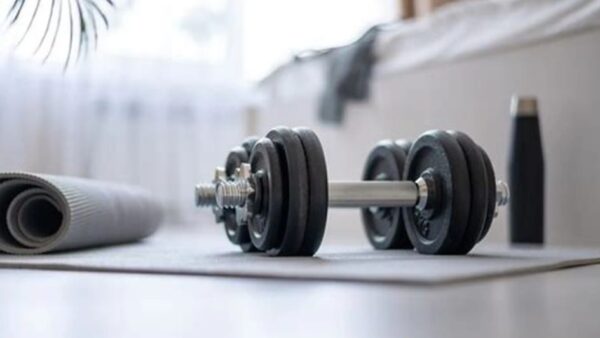Lifestyle
How to do weight training at home with basic dumbbells

Weight training is an efficient means to gain strength, correct posture, enhance metabolism and have a healthy bodyweight.
To get started, you do not need to spend a lot of money in expensive gym memberships and hoards of equipment.
By using no more than two fundamental dumbbells and some effort, anyone can have a potent strength-training routine right at the comfort of one’s home.
Here’s how a strength training routine can be set up at home by using basic dumbbells.
The proper dumbbells
To start with, there are the dumbbells to be chosen. Newbies are advised to use lighter weights, about 2 to 5 kilograms, and learn how to use them with proper technique to avoid muscle injury. When you get stronger, you should slowly add weight so you keep pushing your body. You can also use adjustable dumbbells, which allow you to change the weight depending on your exercise and fitness level. It is always better to start with a manageable weight, and as time goes on, you can increase the weight.
Warm-up
The first step is to warm up. You should ensure that you warm up your body before lifting any weight. Warm-ups loosen joints and help your muscles to move. Commit to doing 5-10 minutes of light cardio such as jogging in place, jumping jacks, or arm swings. You might also perform simple exercises using light dumbbells, such as shoulder rolls or front raises, to lightly stimulate your upper body. Always warm up before exercising, or it will make your training less efficient and increase the risk of injury.
Core exercises using dumbbells
Basic dumbbell weights can train all the major muscle groups. So, we can split the exercises into upper body, lower body, and core exercises.
Regarding the upper body, dumbbell shoulder presses, bicep curls, and bent-over rows are some of the best exercises. The shoulder press involves holding the dumbbells in front of the shoulders and pushing the weights up until your arms are straight. Bicep curls entail raising the weights to the front of the shoulders while keeping the elbows at the sides of the body. In the case of bent-over rows, you hinge at your hips with a straight back and pull the dumbbells towards your waist; this builds strength in the back and arms.
For the lower body, you can do squats, lunges, and deadlifts. When doing squats, hold dumbbells at your sides or on your shoulders, and slowly sit down as though sitting on an invisible chair; this exercises your thighs, glutes, and hips. Lunges are performed by stepping one leg forward and bending your body until both knees form a 90-degree angle, moving alternately. Deadlifts involve holding dumbbells in front of your legs, bending with a straight back, and rising back up; this targets your hamstrings and back muscles.
Russian twists, weighted sit-ups, and side bends are excellent ways to work your core. To do Russian twists, sit on the floor, grab a single dumbbell with both hands, and twist side to side, working your abs.
Design your exercise
In fact, you do not even need to train every day to see results. It is sufficient to have a consistent 30 to 45-minute workout three to four times a week. Try to do each exercise 10-15 times and repeat 2-3 sets. Rest for 30 to 60 seconds between sets. Begin with full-body workouts every other day. As soon as you feel comfortable, you can move to a split routine, targeting different muscle groups on different days.
Good form concentration
Making your workouts effective, without getting hurt, is dependent upon maintaining the form. Sit up straight with your core engaged and do not rush between reps. In case it is necessary, look at tutorial videos or check your posture with the help of a mirror. When you do experience sharp pain (unlike the usual feeling of exhaustion in the muscle) stop and examine your movement.
Never forget recovery
The work-out is equally as crucial as the recovery. Your muscles should be given time to heal and become stronger and therefore train the same muscle group on different days. You need to sleep and rest well, get at least 7-9 hours of rest at night and take lots of water. A well rounded diet full of protein fiber and healthy fats will also help with muscle repair and energy level.
Monitor your results
To keep a record of your sets, reps, weights and how you felt after that session, use an app or keep a notebook. This will not only inspire you but will make you know when it is time that you should raise the notch. The simple things such as an increase of 1 rep or an increase in kilo are already indicators of progress.
What is a dumbbell?
Dumbbell refers to a brief bar loaded on each finish that is used in strength-building and muscle-building exercises. It is light enough to hold with one hand (and is usually used in pairs). Dumbbells aid to concentrate on particular muscles, enhance steadiness, and assist numerous different movements, including curls, pressing, and squats. They can be used in normal exercises as well as those that are intense.






